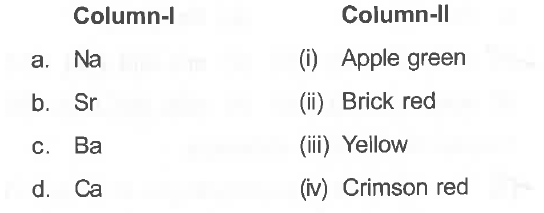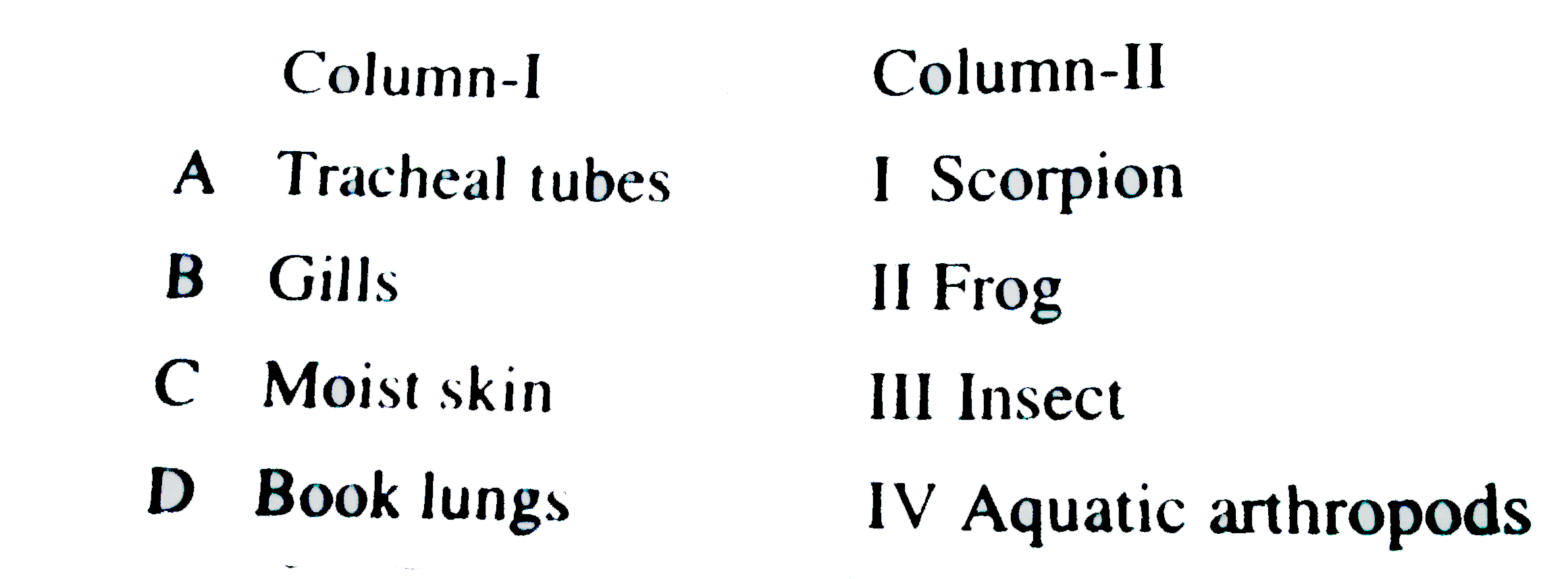Match the following Column-I a.Zn b.Mo c.Mg d.Fe Column-ll (i).RuBisCO (ii) Catalase (iii) Alcohol dehydrogenase (iv)Nitrogenase
a(iv),b(iii),c(i),d(ii)
a(i),b(iii),c(ii),d(iv)
a(iii),b(iv),c(i),d(ii)
a(iii),b(i),c(ii),d(iv)
To solve the matching question, we need to identify which mineral element from Column-I corresponds to which enzyme from Column-II. Here’s the step-by-step solution:
Step 1: Identify the Enzymes and Their Required Minerals
1. Rubisco (1,3-bisphosphate ribulose carboxylase/oxygenase):
- This enzyme is crucial for the process of photosynthesis in plants, particularly in C3 plants.
- Required Mineral: Magnesium (Mg) is essential for the activation and activity of Rubisco.
2. Catalase:
- Catalase is an enzyme that catalyzes the decomposition of hydrogen peroxide into water and oxygen, playing a vital role in protecting cells from oxidative damage.
- Required Mineral: Iron (Fe) acts as a cofactor for catalase, necessary for its enzymatic activity.
3. Alcohol Dehydrogenase:
- This enzyme is involved in the conversion of alcohols to aldehydes or ketones, and is present in various organisms including plants and yeast.
- Required Mineral: Zinc (Zn) serves as a cofactor for alcohol dehydrogenase, facilitating its function.
4. Nitrogenase:
- Nitrogenase is an enzyme complex responsible for the fixation of atmospheric nitrogen into a usable form for plants, particularly in leguminous plants.
- Required Mineral: Molybdenum (Mo) is critical for the activity of nitrogenase.
Step 2: Match the Elements with the Enzymes
Now that we have identified the required minerals for each enzyme, we can match them:
- a. Zn → (iii) Alcohol dehydrogenase
- b. Mo → (iv) Nitrogenase
- c. Mg → (i) RuBisCO
- d. Fe → (ii) Catalase
Final Matches
- a. Zn → (iii) Alcohol dehydrogenase
- b. Mo → (iv) Nitrogenase
- c. Mg → (i) RuBisCO
- d. Fe → (ii) Catalase
Conclusion
The correct matches are:
- a → iii
- b → iv
- c → i
- d → ii
- This enzyme is crucial for the process of photosynthesis in plants, particularly in C3 plants.
- Required Mineral: Magnesium (Mg) is essential for the activation and activity of Rubisco.
- Catalase is an enzyme that catalyzes the decomposition of hydrogen peroxide into water and oxygen, playing a vital role in protecting cells from oxidative damage.
- Required Mineral: Iron (Fe) acts as a cofactor for catalase, necessary for its enzymatic activity.
- This enzyme is involved in the conversion of alcohols to aldehydes or ketones, and is present in various organisms including plants and yeast.
- Required Mineral: Zinc (Zn) serves as a cofactor for alcohol dehydrogenase, facilitating its function.
- Nitrogenase is an enzyme complex responsible for the fixation of atmospheric nitrogen into a usable form for plants, particularly in leguminous plants.
- Required Mineral: Molybdenum (Mo) is critical for the activity of nitrogenase.
- b. Mo → (iv) Nitrogenase
- c. Mg → (i) RuBisCO
- d. Fe → (ii) Catalase
- b. Mo → (iv) Nitrogenase
- c. Mg → (i) RuBisCO
- d. Fe → (ii) Catalase
- a → iii
- b → iv
- c → i
- d → ii
Topper's Solved these Questions
Similar Questions
Match the Column-I with Column-ll.

View SolutionMatch the column I with column ll

View SolutionMatch the column
Column-IColumn-II(i)MoO+22(A)Alcoholic dehydrogenase(ii)Mg+2(B)Nitrogenase(iii)Zn+2(C)Catalase(iv)Fe+3(D)PEP carboxylase
View SolutionMatch the following columns.
Column-I a. stem tendrils b. thorns c. leaf tendrils
Column-II (i) pumpkins (ii) citrus (iii) cucumber (iv) bougainvillea (v) peas (vi) grapevines
View SolutionMatch the following.
(Column I,Column II),((1)Mg2+,,(i) Chlorophyll),((2) P,(ii)ATP),((3)Zn,(iii) Alcohol dehydrogenase),((4)Mo,(iv) Nitrogenase)
View SolutionMatch the following columns and choose the correct answer. (a) Serine(Column l)(ii) (amminoacid) (i) Y(Column ll) (one letter abbriviation) (b) Cystine(Column l)( amminoacid) (ii) C(Column ll) (one letter abbriviation)(c) Thyrosine(Column l)( amminoacid)(iii) S(Column ll) (one letter abbriviation)(d) Glutamic acid(Column l)( amminoacid)(iv) E(Column ll) (one letter abbriviation) Code
View Solutionmatch the following: a. ICNB (column I) and (i) bacteriophage (column II). (b) ICNCP(column I) and (ii) animals(column II). (c)ICVCN( column I) and (iii) Vibrio cholerae (column II). (d)ICZN(column I) and (iv) cultivated plants (column II)
View SolutionMatch the follwig columns Column-I Column-II a. Stem tendrills (i) Pumpkins b. Thoms (ii) Citrus c. Leaf tendrills (iii) Cucumber . (iv)Bougainvillea . (v) Peas . (vi) Grapevines
View SolutionMatch the following .
Column-I (Mineral)Column-II (Role)a.K(i)Water splitting b.Zn(ii)Energy metabolismc.Mg(iii)Auxin synthesisd.Mn(iv)Stomatal movement
View Solutionmatch the following column a. small pox (column I) b.German measles(column I) c.Mumps(column I) d.AIDS(column I) e. Polimyelitis (column I) . (i) paramyxo virus (column II) (ii) polio virus(column II) (iii) variola virus (column II) ( iv) Rubella virus(column II) (v) Retro virus(column II).
View Solution
